Citrus: Recognizing Greening and Canker Disease
Last updated 3/15/2022 at 12:38pm
Hopefully, our recent warmer weather didn't lull any fellow gardeners into believing spring had arrived in Southeast Texas! March weather patterns are unpredictable, quickly changing from warm day time temperatures to frigid nighttime temperatures within a short period! Dramatic temperatures swings can make even the most seasoned gardeners cringe, while determining when to plant annuals, perennial flowers, and vegetables (as I too, almost planted tomato and pepper plants this past weekend). Both heat-loving plants would suffer severe damage or worse, succumb to cold temperatures but I digress. This week's subject Asian Citrus Greening and Citrus Canker, is part one of a two-part series, recognizing two citrus diseases.
There are numerous plant diseases which can attack citrus trees, most notably two of them are Asian citrus greening and citrus canker. The Texas Department of Agriculture (TDA) and US Department of Agriculture (USDA) have put forth considerable resources and effort to control the spread of both these devastating diseases. Texas counties where the diseases have appeared are quarantined and a few of the counties nearest our geographical area are Harris, Montgomery, Galveston, Brazoria, and Fort Bend. Home-grown citrus located within quarantine areas must be consumed within the local area and home-grown citrus trees cannot be transported outside of the quarantined area.
Commercial citrus enterprises, web-based retailers, and "mom and pop" roadside vendors within the State of Texas must be able to prove they are following Federal and State quarantine guidelines. Before buying citrus trees gardeners need to ask questions of the seller. Make certain the seller is following Federal and State guidelines before purchasing citrus trees and that the citrus is not from a quarantined zone. Citrus Greening is a bacterial disease caused by a bacterium, known as Candidatus Liberibacter Asiaticus, which is vectored (carried) by the Asian citrus psyllid (ACP). It is also known as the yellow dragon disease, found worldwide, and confirmed in Louisiana 2008 and Texas 2014. Unfortunately, there is no cure for this disease. While the disease poses no threat to humans or animals, it has devastated millions of acres of citrus production around the world, including in the United States.
Citrus trees infected by citrus greening may have the Asian citrus psyllid. The adult insect is about the size of a toothpick tip (about 3mm or ⅛ inch) with a distinctive 45-degree angled posture when present on leaves. The ACP nymphs are yellow orange in color, smaller, and feed on new growth, leaving behind a waxy fluid. Once a tree is infected with the bacteria, the tree can remain without detectable symptoms for months or years. During this symptomless phase, the tree can serve as a source of bacteria to infect other trees. Leaves will become yellowed, blotchy, or mottled, and may have raised veins with a corky appearance. Fruit will have a bitter taste though it poses no health issue for humans. Further, fruit might be stunted, or lopsided while remaining green or partially green. And will sometimes fall away from the tree prematurely
Blotchy, mottled, and yellowing leaves (Image courtesy aggie-horticulture)
As there is no cure for Asian Citrus Greening, and prevention is the best approach to managing following these guidelines:
• Do not purchase or transport plants, fruit, budwood, rootstock, seedlings, or budded trees from quarantined areas.
• Purchase certified plants from Texas Department of Agriculture (TDA)-certified citrus growers and nurseries.
• Sound sanitation practices are paramount to reduce potential disease spread. Practice general cleanliness by using alcohol-based sanitizers, bleach solution, or antibacterial soap solutions to decontaminate equipment and tools which will reduce the risks associated with human or mechanical transmission of the diseases.
• Remove and destroy diseased plants to eliminate potential bacteria for future infections.
• Closely monitor nearby citrus plants. If new infections appear, act swiftly. TDA regulations require disposal of infected tree and plant material by incineration or bagging and burying it at least 2 feet deep at a municipal landfill.
Plant protection chemicals which contain copper can help prevent infection. These products reduce risks but do not stop the disease from occurring or cure affected trees. Application timing is critical to provide protection, since new, growing tissues are the most susceptible to infection. Multiple applications will be needed to ensure proper coverage on the plant. Proper chemical use and rates are available on the product labels. Read application directions and follow instructions before applying any chemical control agent.
Our recent weather patterns have been true to form for Southeast Texas, warm one day and frigid the next. Hopefully, these topsy-turvy patterns will calm down and each of us will be able to do what we enjoy most-Gardening of course! Hello gardening friends, here is to hoping spring is here to stay and with-it warmer weather (because I can't keep up-potting my tomato and pepper plants started from seeds, as I'm running out of room inside). This is the second installment of a two-part series recognizing Asian Citrus Greening and Citrus Canker. Last week, part one examined Asian Citrus Greening. This week we will examine characteristics of citrus canker.
There are multiple diseases which can affect citrus trees, but two diseases are particularly devastating: Asian Citrus Greening and Citrus Canker. Both diseases are currently in Texas and other states along the Gulf Coast, South Carolina and the Los Angeles area are also included.
Citrus Canker is an incurable bacterial disease which causes lesions on citrus fruit, stems and leaves. The bacterial disease isn't harmful to humans, but it is highly contagious. The disease spreads rapidly by wind-driven rain, equipment, and people who can transmit the infection on their hands, clothing or by handling infected plants or plant parts (fruit, leaves or stems). Citrus canker is spread long distances by movement of infected plants or plant parts including nursery trees and propagation material (budwood, rootstock seedlings and budded trees). Severe weather events, hurricanes, easily spread Citrus Canker long distances. Unfortunately, the bacteria can survive up to 10 months in lesions on living citrus plants and there is no cure for this disease.
The pathogen thrives in our moist, warm conditions entering the host plant via leaf pores or wounds, caused by insects, such as those caused by leaf miners. Within a short period of time, about seven to ten days from entering the plant, a pinpoint lesion becomes visible. The lesion appears as a raised "blemish" and affects both leaf surfaces, though mainly on the underside. The blemish develops a yellow halo and a water-soaked margin, which becomes corky and crateriform, with a raised margin and sunken center. Leaf lesions are usually about ⅟16 – ½ inch across. Leaves and young green stems are highly susceptible and vulnerable to the infection. Trees can survive for long periods with diseased plant tissues, which cause discoloration of the bark.
As there is no cure for Citrus Canker, prevention is the best approach to managing both. Do not purchase plants, or budded trees from quarantined areas. Purchase certified plants by buying plants from Texas Department of Agriculture-certified citrus growers and nurseries. Use good sanitation practices to reduce potential disease spread. Practice general cleanliness and use alcohol-based sanitizers, bleach solution, and antibacterial soap solutions to decontaminate equipment and tools thus reducing the risks associated with human and mechanical transmission of the diseases. If you suspect that a citrus plant has Citrus Canker or Citrus Greening, report the tree to TDA at (800) 835-5832 or online at http://www.citrusalert.com/report-a-tree for further assistance. Remove and destroy diseased plants to eliminate potential bacteria for future infections. Monitor nearby citrus plants. If new infections appear, act quickly. Remember, Texas Department of Agriculture regulations require disposal of infected tree and plant material by burning or bagging and burying it at least 2 feet deep at a municipal landfill.
For more detailed information on Citrus Canker visit website: https://agrilifeextension.tamu.edu/library/gardening/citrus-canker/, or contact Texas Department of Agriculture: http://www.texasagriculture.gov.
For more information or to have all your gardening questions answered, contact the Orange County Master Gardeners: Website: https://txmg.org/orange Facebook: Orange County Texas Master Gardeners Association Helpline: (409) 882-7010 Email: [email protected].


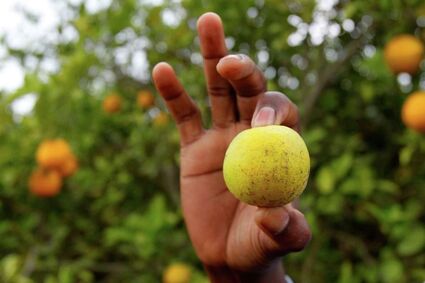

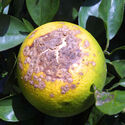
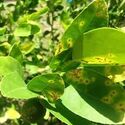
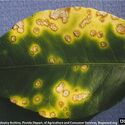
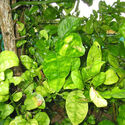
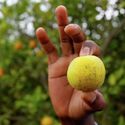













Reader Comments(0)